Metal Flue Pipe Holes
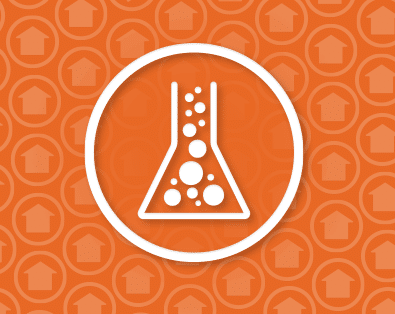
Holes in metal flue pipes that extend from gas appliances can create a hazard. They may also indicate significant home performance issues.
Signs of Condensation
The products of gas combustion should stay warm enough to flow up the chimney without condensation. Watch for signs of poor draft of gas combustion, such as condensation and rust on the metal flue pipe from the appliance to the chimney (Photo 1).
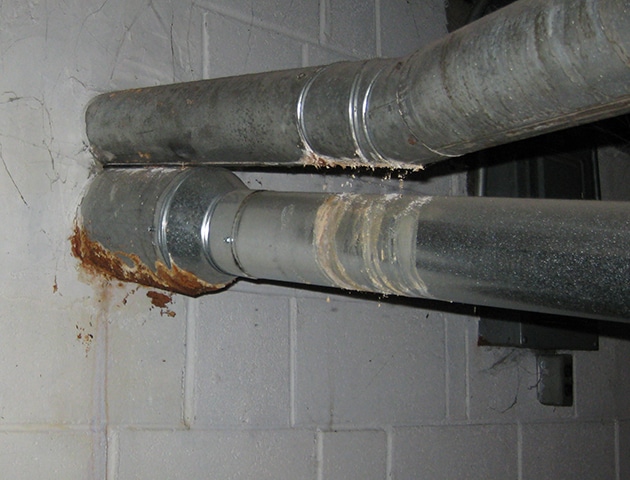
Photo 2 shows a severely rusted flue pipe. If you look closely, you can see rust through the elbow joints and along the horizontal run. This metal pipe has failed.
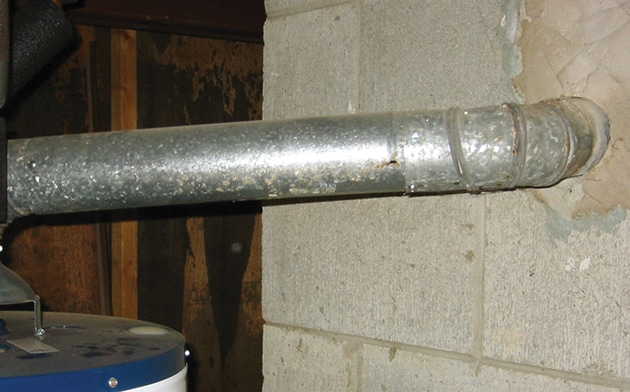
A Prime Candidate for Rust
Look at the gas water heater in Photo 3. A long, low-slope flue pipe extends back from the water heater, over the crawl space, and all the way to the chimney. Immediately you’ll see red flags: Does the flue pipe have the proper pitch? Is the flue pipe too long for the height of the chimney? Could the chimney be blocked?
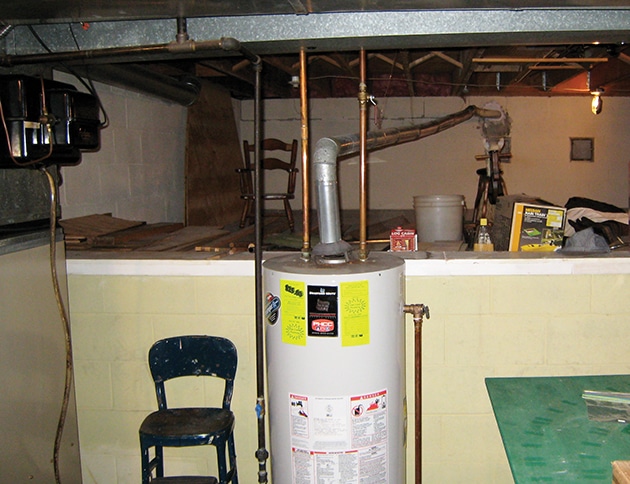
I took Photo 4 near the masonry chimney in that crawl space. Notice a dip in the slope of the flue pipe, patched with duct tape. (How often we see duct tape, “the handyman’s secret weapon,” at the site of a defect!) Condensation has also created rust holes and metal failure.
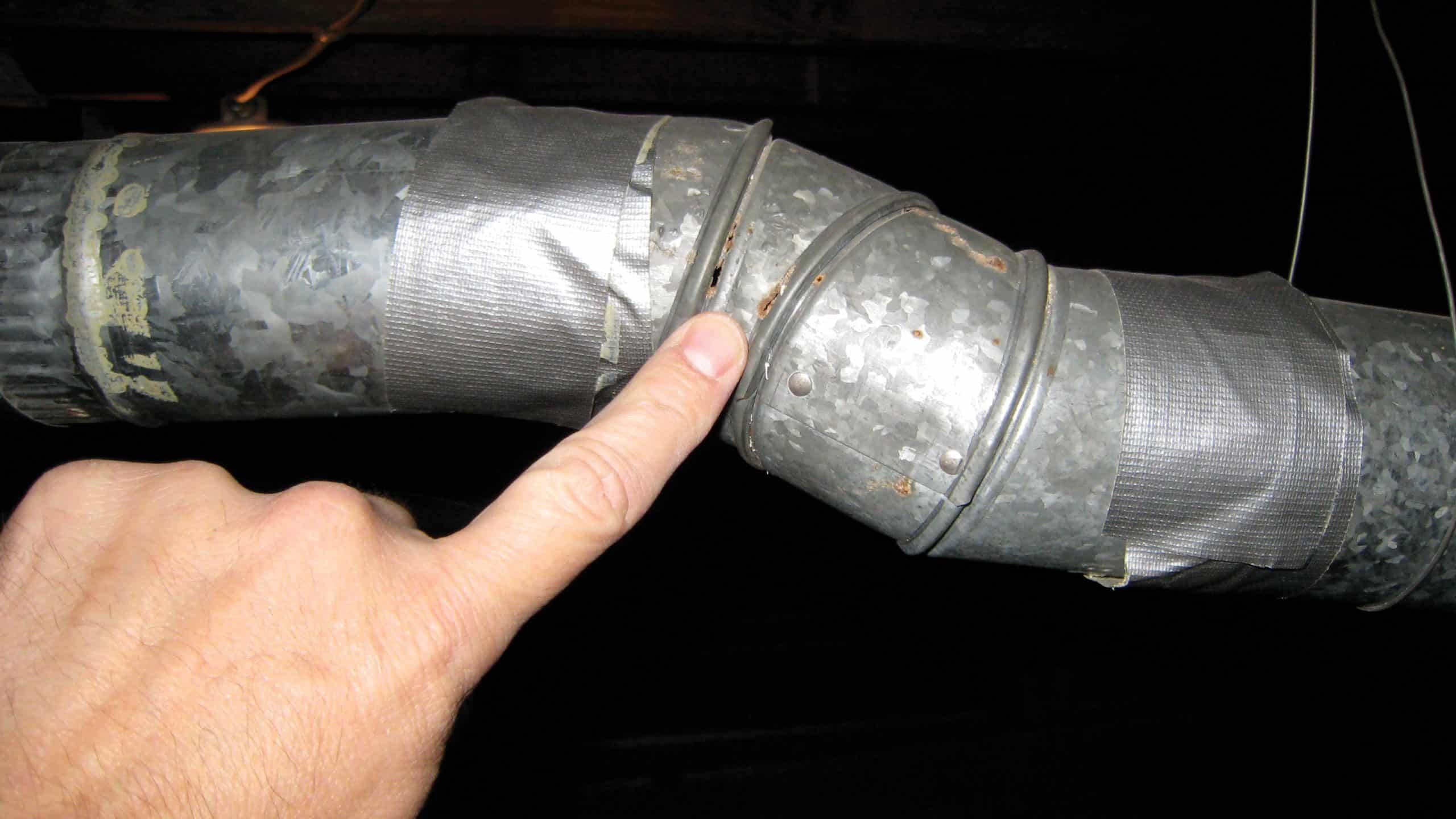
For this water heater, the metal flue pipe run was too long, the slope was inadequate, and the chimney was not high enough for the horizontal run. The products of gas combustion did not flow up the chimney. Instead, these moisture-laden products cooled in the metal flue, causing water condensation on the metal.
Related Issues Due to Poor Design
Even without a complete evaluation of the chimney, flue pipe, and btu of a gas appliance, we can still understand the problem. Where combustion gases don’t flow properly they cool in the flue pipe, and condensation and rust occur over time.
Illustration W006 shows related issues. In addition to a rusted flue pipe, you may see signs of backdrafting at the draft diverter and burn marks near the gas burner. A lack of combustion air or negative pressure in a home can also cause backdrafting and rust. Negative pressure may be due to a large-volume kitchen fan or even a clothes dryer in a very tight home. Oversized chimney flues are another potential source of draft issues.
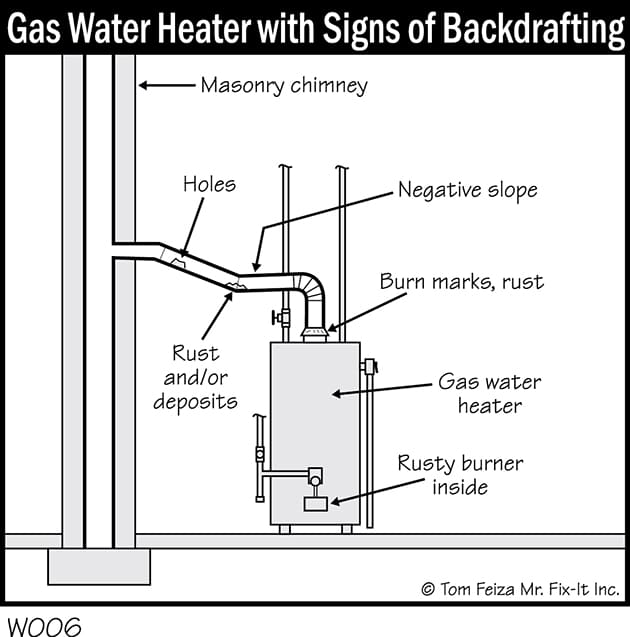
The Takeaway
Rust and condensation on metal flue pipes indicate improper draft of combustion products up the chimney. You should describe this as a safety defect requiring further evaluation. While these signs are readily visible to a good inspector, you don’t need to identify all the potential causes.
To Read the Full Article
ASHI offers its members unparalleled resources to advance their careers. ASHI offers training for inspectors at all levels of knowledge and experience, including resources about all major home systems. Members benefit from a vast network of experienced professionals, providing a community for mentorship and knowledge sharing..
In this Issue
Infrared Cameras: Redefining the Visual Home Inspection
Why Deck Safety Should be Top of Mind
An Inspector’s Experience with Technical Report Writing
Subtle Ways to Impress on A Home Inspection
Harry Morrell on His Journey Through ASHI and the Keys to Great Business
What’s Happening in ASHI Edge?
Postcards From The Field

FIND A HOME
INSPECTOR
Professional Networking
Grow your professional network, find a mentor, network with the best, and best part of the community that’s making home inspection better every day.
